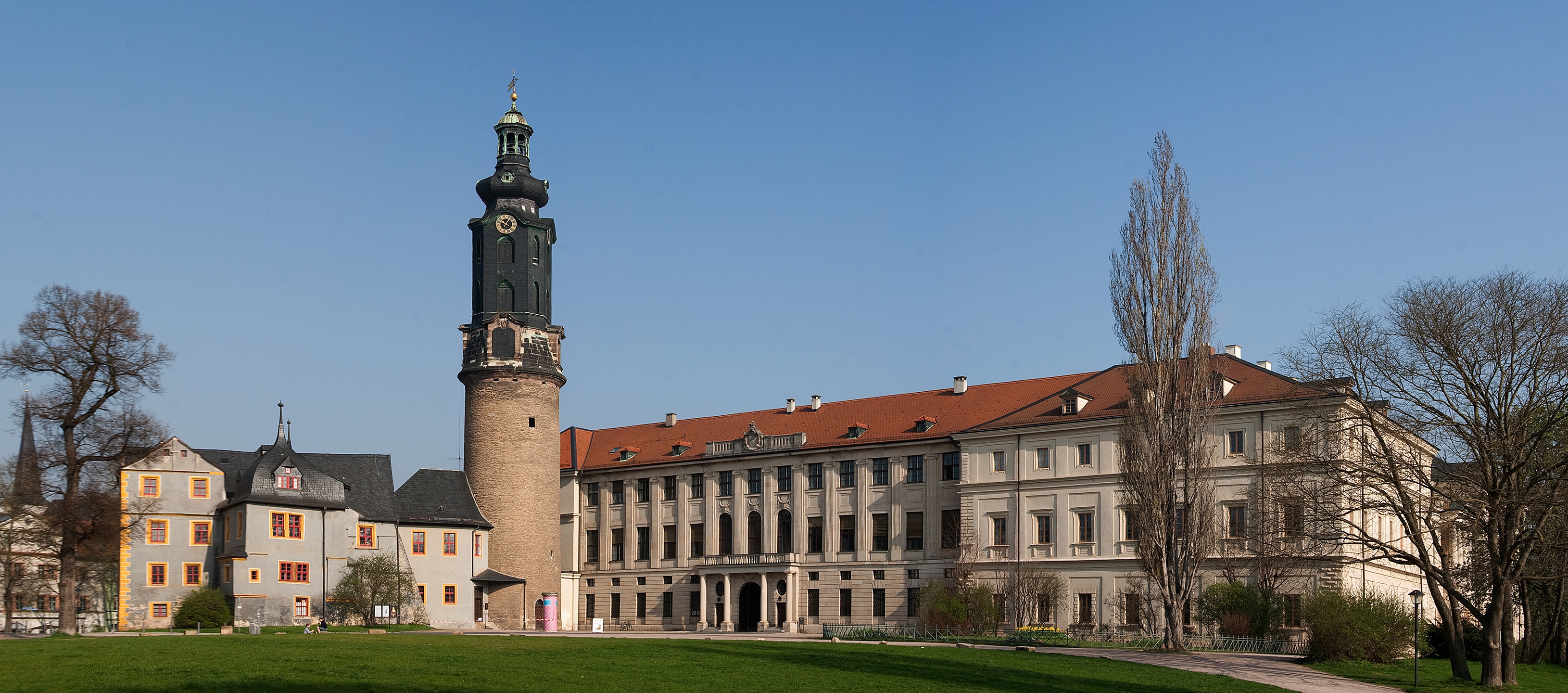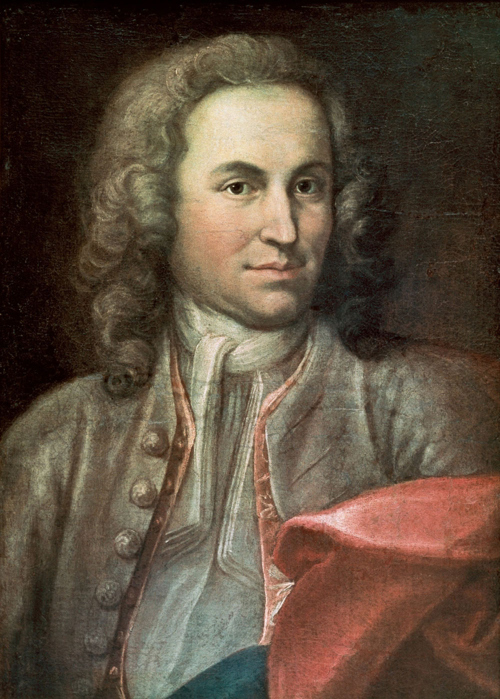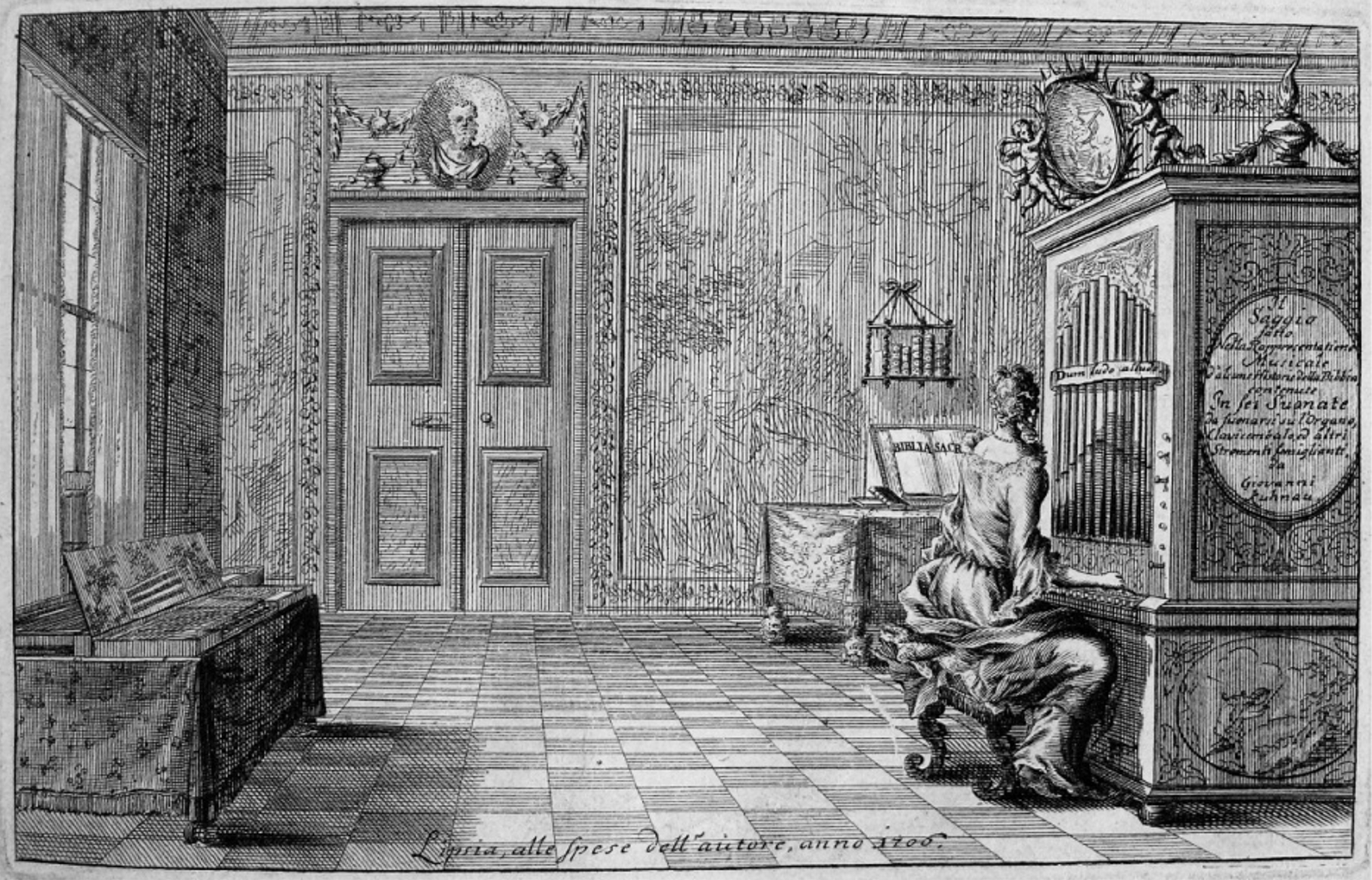|
Jesus Nahm Zu Sich Die Zwölfe, BWV 22
(Jesus gathered the twelve to Himself), 22, is a church cantata by Johann Sebastian Bach composed for Quinquagesima, the last Sunday before Lent. Bach composed it as an audition piece for the position of Thomaskantor in Leipzig and first performed it there on 7 February 1723. The work, which is in five movements, begins with a scene from the Gospel reading in which Jesus predicts his suffering in Jerusalem. The unknown poet of the cantata text took the scene as a starting point for a sequence of aria, recitative, and aria, in which the contemporary Christian takes the place of the disciples, who do not understand what Jesus is telling them about the events soon to unfold, but follow him nevertheless. The closing chorale is a stanza from Elisabeth Cruciger's hymn "". The music is scored for three vocal soloists, a four-part choir, oboe, strings and continuo. The work shows that Bach had mastered the composition of a dramatic scene, an expressive aria with obbligato oboe, a ... [...More Info...] [...Related Items...] OR: [Wikipedia] [Google] [Baidu] |
Church Cantata (Bach)
Throughout his life as a musician, Johann Sebastian Bach composed cantatas for both secular and sacred use. His church cantatas are cantatas which he composed for use in the Lutheran church, mainly intended for the occasions of the liturgical year. Bach's ''Nekrolog'' mentions five cantata cycles: "Fünf Jahrgänge von Kirchenstücken, auf alle Sonn- und Festtage" (Five year-cycles of pieces for the church, for all Sundays and feast days), which would amount to at least 275 cantatas,Alfred Dörffel. Bach-Gesellschaft Ausgabe Volume 27: '' Thematisches Verzeichniss der Kirchencantaten No. 1–120''. Breitkopf & Härtel, 1878. Introduction, p. VI or over 320 if all cycles would have been ideal cycles.Günther Zedler''Die Kantaten von Johann Sebastian Bach: Eine Einführung in die Werkgattung''.Books on Demand, 2011. p. 24–25/ref> The extant cantatas are around two-thirds of that number, with limited additional information on the ones that went missing or survived as fra ... [...More Info...] [...Related Items...] OR: [Wikipedia] [Google] [Baidu] |
Choir
A choir ( ; also known as a chorale or chorus) is a musical ensemble of singers. Choral music, in turn, is the music written specifically for such an ensemble to perform. Choirs may perform music from the classical music repertoire, which spans from the medieval era to the present, or popular music repertoire. Most choirs are led by a conductor, who leads the performances with arm, hand, and facial gestures. The term ''choir'' is very often applied to groups affiliated with a church (whether or not they actually occupy the quire), whereas a ''chorus'' performs in theatres or concert halls, but this distinction is not rigid. Choirs may sing without instruments, or accompanied by a piano, pipe organ, a small ensemble, or an orchestra. A choir can be a subset of an ensemble; thus one speaks of the "woodwind choir" of an orchestra, or different "choirs" of voices or instruments in a polychoral composition. In typical 18th century to 21st century oratorios and masses, 'choru ... [...More Info...] [...Related Items...] OR: [Wikipedia] [Google] [Baidu] |
Saxe-Weimar
Saxe-Weimar (german: Sachsen-Weimar) was one of the Saxon duchies held by the Ernestine branch of the Wettin dynasty in present-day Thuringia. The chief town and capital was Weimar. The Weimar branch was the most genealogically senior extant branch of the House of Wettin. History Division of Leipzig In the late 15th century much of what is now Thuringia, including the area around Weimar, was held by the Wettin Electors of Saxony. According to the 1485 Treaty of Leipzig, the Wettin lands had been divided between Elector Ernest of Saxony and his younger brother Albert III, with the western lands in Thuringia together with the electoral dignity going to the Ernestine branch of the family. Ernest's grandson Elector John Frederick I of Saxony forfeited the electoral dignity in the 1547 Capitulation of Wittenberg, after he had joined the revolt of the Lutheran Schmalkaldic League against the Habsburg emperor Charles V, was defeated, captured and banned. Nevertheless, according ... [...More Info...] [...Related Items...] OR: [Wikipedia] [Google] [Baidu] |
Weimar
Weimar is a city in the state of Thuringia, Germany. It is located in Central Germany between Erfurt in the west and Jena in the east, approximately southwest of Leipzig, north of Nuremberg and west of Dresden. Together with the neighbouring cities of Erfurt and Jena, it forms the central metropolitan area of Thuringia, with approximately 500,000 inhabitants. The city itself has a population of 65,000. Weimar is well known because of its large cultural heritage and its importance in German history. The city was a focal point of the German Enlightenment and home of the leading figures of the literary genre of Weimar Classicism, writers Johann Wolfgang von Goethe and Friedrich Schiller. In the 19th century, noted composers such as Franz Liszt made Weimar a music centre. Later, artists and architects such as Henry van de Velde, Wassily Kandinsky, Paul Klee, Lyonel Feininger, and Walter Gropius came to the city and founded the Bauhaus movement, the most important German de ... [...More Info...] [...Related Items...] OR: [Wikipedia] [Google] [Baidu] |
Wilhelm Ernst, Herzog Von Sachsen-Weimar-Eisenach , the Dutch national anthem
{{Disambiguation ...
Wilhelm may refer to: People and fictional characters * William Charles John Pitcher, costume designer known professionally as "Wilhelm" * Wilhelm (name), a list of people and fictional characters with the given name or surname Other uses * Mount Wilhelm, the highest mountain in Papua New Guinea * Wilhelm Archipelago, Antarctica * Wilhelm (crater), a lunar crater See also * Wilhelm scream, a stock sound effect * SS ''Kaiser Wilhelm II'', or USS ''Agamemnon'', a German steam ship * Wilhelmus "Wilhelmus van Nassouwe", usually known just as "Wilhelmus" ( nl, Het Wilhelmus, italic=no; ; English translation: "The William"), is the national anthem of both the Netherlands and the Kingdom of the Netherlands. It dates back to at least 1572 ... [...More Info...] [...Related Items...] OR: [Wikipedia] [Google] [Baidu] |
Christ Lag In Todes Banden, BWV 4
(also spelled ; "Christ lay in death's bonds" or "Christ lay in the snares of death"), 4, is a cantata for Easter by German composer Johann Sebastian Bach, one of his earliest church cantatas. It is agreed to be an early work partly for stylistic reasons and partly because there is evidence that it was probably written for a performance in 1707. Bach went on to complete many other works in the same genre, contributing complete cantata cycles for all occasions of the liturgical year. John Eliot Gardiner described it as Bach's "first-known attempt at painting narrative in music". is a chorale cantata, a style in which both text and music are based on a hymn. In this instance, the source was Martin Luther's hymn of the same name, the main hymn for Easter in the Lutheran church. The composition is based on the seven stanzas of the hymn and its tune, which was derived from Medieval models. Bach used the unchanged words of a stanza of the chorale in each of the seven vocal movement ... [...More Info...] [...Related Items...] OR: [Wikipedia] [Google] [Baidu] |
Chorale Cantata (Bach)
There are 52 chorale cantatas by Johann Sebastian Bach surviving in at least one complete version. Around 40 of these were composed during his second year as Thomaskantor in Leipzig, which started after Trinity Sunday 4 June 1724, and form the backbone of his chorale cantata cycle. The eldest known cantata by Bach, an early version of ''Christ lag in Todes Banden'', BWV 4, presumably written in 1707, was a chorale cantata. The last chorale cantata he wrote in his second year in Leipzig was ''Wie schön leuchtet der Morgenstern'', BWV 1, first performed on Palm Sunday, 25 March 1725. In the ten years after that he wrote at least a dozen further chorale cantatas and other cantatas that were added to his chorale cantata cycle. Lutheran hymns, also known as chorales, have a prominent place in the liturgy of that denomination. A chorale cantata is a church cantata based on a single hymn, both its text and tune. Bach was not the first to compose them, but for his 1724-25 second Leipzi ... [...More Info...] [...Related Items...] OR: [Wikipedia] [Google] [Baidu] |
Aus Der Tiefen Rufe Ich, Herr, Zu Dir, BWV 131
(Out of the depths I call, Lord, to You), , is a church cantata by the German composer Johann Sebastian Bach. It was composed in either 1707 or 1708, which makes it one of Bach's earliest cantatas. Some sources suggest that it could be his earliest surviving work in this form, but current thinking is that there are one or two earlier examples. The cantata was commissioned by the minister of one of the churches in Mühlhausen, the city where Bach worked at the time. It was possibly written for a special occasion. The text is based on Luther's German version of Psalm 130 and also incorporates the words of a chorale. Bach's music integrates melodies from the chorale into larger structures. Bach also shows his interest in counterpoint, something which was characteristic of him throughout his career. History and words A note on the autograph score of the cantata indicates that the work was commissioned by Georg Christian Eilmar, minister of the Marienkirche (St. Mary's church) i ... [...More Info...] [...Related Items...] OR: [Wikipedia] [Google] [Baidu] |
Mühlhausen
Mühlhausen () is a city in the north-west of Thuringia, Germany, north of Niederdorla, the country's geographical centre, north-west of Erfurt, east of Kassel and south-east of Göttingen. Mühlhausen was first mentioned in 967 and became one of the most important cities in central Germany in the late Middle Ages. In the mid-13th century, it became a '' Freie Reichsstadt'', an independent and republican self-ruled member of the Holy Roman Empire, controlling an area of approximately and 19 regional villages. Due to its long-distance trade, Mühlhausen was prosperous and influential with a population of 10,000 around 1500. Because it was spared from later destruction, Mühlhausen today has a great variety of historical buildings with one of the largest medieval city centres remaining in Germany, covering a surface of more than 50 hectares within the inner city wall and approximately 200 hectares overall. There are eleven Gothic churches, several patricians’ houses and ... [...More Info...] [...Related Items...] OR: [Wikipedia] [Google] [Baidu] |
Passions (Bach)
As Thomaskantor, Johann Sebastian Bach provided Passion music for Good Friday services in Leipzig. The extant ''St Matthew Passion'' and ''St John Passion'' are Passion oratorios composed by Bach. Passions composed and/or staged by Bach According to his "", the 1754 obituary written by Johann Friedrich Agricola and the composer's son Carl Philipp Emanuel, Bach wrote "five Passions, of which one is for double chorus". The double chorus one is easily identified as the ''St Matthew Passion''. The ''St John Passion'' is the only extant other one that is certainly composed by Bach. The libretto of the '' St Mark Passion'' was published in Bach's time, allowing reconstruction based on the pieces Bach is known to have parodied for its composition, while the extant '' St Luke Passion'' likely contains little or no music composed by Bach. Which Bach compositions, apart from the known ones, may have been meant in the obituary remains uncertain. The ''St John Passion'' is shorter and has ... [...More Info...] [...Related Items...] OR: [Wikipedia] [Google] [Baidu] |
Johann Kuhnau
Johann Kuhnau (; 6 April 16605 June 1722) was a German polymath, known primarily as a composer today. He was also active as a novelist, translator, lawyer, and music theorist, and was able to combine these activities with his duties in his official post as Thomaskantor in Leipzig, which he occupied for 21 years. Much of his music, including operas, masses, and other large-scale vocal works, is lost. His reputation today rests on his ''Biblical Sonatas'', a set of programmatic keyboard sonatas published in 1700, in which each sonata depicted in detail a particular story from the Bible. After his death, Kuhnau was succeeded as Thomaskantor by Johann Sebastian Bach. Biography Much of the biographical information on Kuhnau is known from an autobiography published by Johann Mattheson in 1740 in his ''Grundlage einer Ehrenpforte''. Kuhnau's Protestant family was originally from Bohemia, and their name was Kuhn. Kuhnau was born in Geising, present-day Saxony. His musical talents we ... [...More Info...] [...Related Items...] OR: [Wikipedia] [Google] [Baidu] |
Obbligato
In Western classical music, ''obbligato'' (, also spelled ''obligato'') usually describes a musical line that is in some way indispensable in performance. Its opposite is the marking ''ad libitum''. It can also be used, more specifically, to indicate that a passage of music was to be played exactly as written, or only by the specified instrument, without changes or omissions. The word is borrowed from Italian (an adjective meaning ''mandatory''; from Latin ''obligatus'' p.p. of ''obligare'', to oblige); the spelling ''obligato'' is not acceptable in British English, but it is often used as an alternative spelling in the US. The word can stand on its own, in English, as a noun, or appear as a modifier in a noun phrase (e.g. ''organ obbligato''). Independence ''Obbligato'' includes the idea of independence, as in C.P.E. Bach's 1780 Symphonies "''mit zwölf obligaten Stimmen''" ("with twelve ''obbligato'' parts") by which Bach was referring to the independent woodwind parts he was usi ... [...More Info...] [...Related Items...] OR: [Wikipedia] [Google] [Baidu] |








